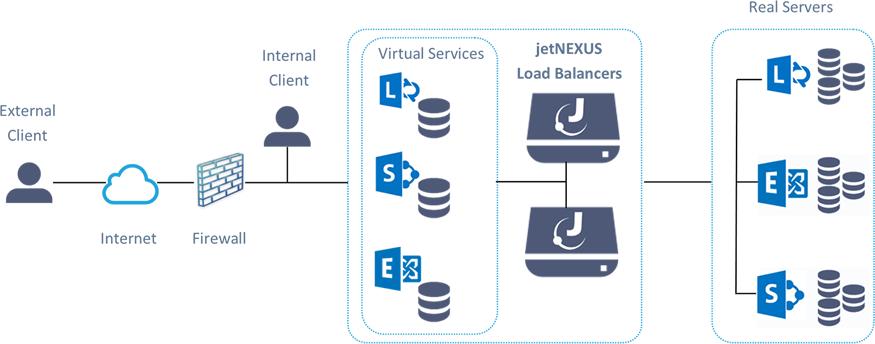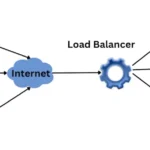Picture this, you work in purchasing. You come into work to find a sign-off request on your desk for yet another IT solution.
A load balancer – you are unsure of what it is or does, all you know is that the IT department need it. Sound familiar?
Before you call your IT Manager and have him throw technical jargon at you whilst trying to justify the cost, let’s explain its business benefits in simple terms and how it can deliver a solid return on investment for your organisation.
What does a load balancer do?
A load balancer is used to distribute network and application traffic to multiple servers to guarantee always-available applications.
 Think of a load balancer as a set of traffic lights, intercepting application traffic, managing the flow across multiple servers to avoid overload and only directing traffic to available and healthy servers.
Think of a load balancer as a set of traffic lights, intercepting application traffic, managing the flow across multiple servers to avoid overload and only directing traffic to available and healthy servers.
Load balancers are an essential network solution for any organisation with more than one server, running mission critical internal or external facing web-sites and/or web-based applications.
Load balancers can be deployed in incredibly simple setups, scaling to meet the demands of any level of traffic and network size, meaning that businesses of all sizes can really benefit from investing in application delivery control technology.
Mitigating the threat of costly downtime
Primarily, a load balancer adds resilience to your systems and mitigates the risk of costly downtime. When we talk about the cost of downtime, we don’t just mean loss of revenue for eCommerce sites but also the cost of lost productivity for staff without access to their applications or damage to a brand’s reputation after providing a poor user experience.
Load balancers make networks more efficient and service delivery more reliable by:
- Providing high availability and resilience for applications
- Increasing system capacity
- Scaling operations on-demand to accommodate peaks in traffic
- Improving application performance
How does load balancing work?
The edgeNEXUS load balancer, like many others, acts as a reverse proxy, handling incoming client requests and communicating with the load balanced servers behind it on their behalf. It then distributes the requests according to the load balancing policy chosen.

Traditionally load balancing solely offered resilience and high availability for applications. However, Application Delivery Control (ADC) technology has developed considerably to offer a number of additional application optimisation benefits that go beyond simple server availability.
Modern ADC’s can reduce the burden on backend servers to optimise service performance. They can offload server processes, carrying out tasks such as SSL Offload, Compression and Caching far more efficiently than the servers themselves. In addition to this they can perform sophisticated security and traffic manipulation tasks to give clients powerful and granular control over their service delivery.
Finally, advanced and custom server health monitoring in ADCs enables the detection and automatic routing around problematic servers, making load balancing technology an integral network solution for organisations of all sizes.
Why do you need a load balancer?
 You need to ensure that your business-critical applications are always available to your clients, guaranteeing 24/7 business functionality. A load balancer will improve your application resiliency, by making sure that each service is always running. To increase this further, we advise you deploy these in a cluster to provide failover between load balancers themselves. This means no loss of revenue from your online store, your colleagues can access their emails, those who might be working remotely can RDP (Remote Desktop Protocol) in without a hitch.
You need to ensure that your business-critical applications are always available to your clients, guaranteeing 24/7 business functionality. A load balancer will improve your application resiliency, by making sure that each service is always running. To increase this further, we advise you deploy these in a cluster to provide failover between load balancers themselves. This means no loss of revenue from your online store, your colleagues can access their emails, those who might be working remotely can RDP (Remote Desktop Protocol) in without a hitch.
Utilising a load balancer’s caching and compression features can drastically improve your application performance; your website will load faster; file access will speed up and users will have a better experience. Our load balancer appliance can perform SSL (Secure Socket Layer) offloading, which frees up copious amounts of CPU (Central Processing Unit) on the hosts, thus enabling the servers to perform better. We can do this as a virtual appliance or if you want to take it to the next level move to hardware for guaranteed performance.
The use of a load balancer enables you to scale your business in line with growth demands. You can service more users, faster and deploy new applications seamlessly. You can deploy multiple virtual servers running the same application to increase your resiliency and provide overlay on services. This will allow your IT engineers to perform updates within work time, thus reducing out of hours expenditure and the provision of additional staffing to cover maintenance periods.
What platforms support load balancing?
Most load balancing vendors provide flexible deployment options to suit a client’s environment without the need for additional, costly network or infrastructure changes. edgeNEXUS Load Balancers can be deployed as dedicated, physical hardware appliances, flexible, virtual appliances or for cloud workloads. You just need to remember to deploy two load balancers in an active-active configuration to remove a single point of failure.
 Each deployment platform has its pros and cons in terms of cost, flexibility, power and performance. Generally speaking the load balancer device will be functionally identical so your choice of platform can be determined entirely by the requirements of your environment.
Each deployment platform has its pros and cons in terms of cost, flexibility, power and performance. Generally speaking the load balancer device will be functionally identical so your choice of platform can be determined entirely by the requirements of your environment.
Have we convinced you yet? Click here to discover more benefits of load balancing.









